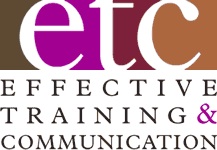Glad to see this new feature went over so well. Three more questions about Presentations this month and two of them came in recently.
1. Why is the introduction so important?
The first few minutes of any presentation are the most important minutes. Start strong, powerfully, engaging and immediately so you don’t blow your intro. And never start with a joke unless you were hired as an entertainer and the only goal is to be humorous. Jokes rarely work in typical workplace presentations.
What does work is thorough planning and careful crafting of your opening comments. Introductions should generally be 10 % of the running length – or less – and accomplish a lot of important tasks:
- Engage the audience immediately with a question, fact, stat, quote, etc. Stories work, but they have to be very short and connect directly to the message … and most aren’t.
- Overview main point and sub points, so they know what they’re about to hear. The old adage – ‘Tell ’em what you’re gonna say … ‘
- Stress why the information is important to them – answer the question on everyone’s mind, ‘WII-FM?’
- Briefly state your background/credibility unless that was already done in the speaker intro someone else just shared. If so, don’t repeat what they already know.
- Mention when and how the audience should ask questions.
- Also indicate if you have a handout or take-home for them and when they’ll get it.
Like I said, a lot to do in a short time. So, get your audience at ‘Hello’ and don’t blow your intro.
2. How do I improve my gestures?
- Gestures are normal, natural and human. Authentic ones usually work well. But some gestures are ineffective and reduce the credibility and illusion of confidence presenters work so hard to project.
- Gesturing too much or using repetitive gestures can become distractions for the audience.
- Nervous gestures – rubbing hands together, gesturing with hands down at your sides, playing with the remote or pen – also send out a negative non-verbal message about confidence … or the lack thereof.
- Putting both hands in your pockets rarely hide the nervous fidgets and often appear too casual.
- Hands together in front in the ‘fig leaf’ stance don’t add any value either and direct the audience’s eyes to that part of your body – bad idea.
- Hands behind your back remove the potential power of gestures and look subordinate to the audience – also a bad idea.
- Gesturing while holding your notes can be very distracting and increases the chance of dropping them. This is especially important when using 3 x 5 note cards – really a bad idea.
So, when presenting, hand it to your audience with style and confidence.
3. Why are some content experts such terrible speakers?
- Content experts who automatically think they’d be great presenters are like airline passengers who automatically think they’d make great pilots or gifted athletes who think they’d make great coaches. Totally different skill sets and mind sets involved here.
- Many content expert speakers I encounter as an executive presentation coach have an inherent ‘presenter-centric’ mentality. They’re the experts that the audience wants to learn from, so they’ll tell them everything the presenter knows or wants to tell them in the way the presenter wants to tell them as long as the presenter wants to talk. This mind set is often unconscious, but obvious to the audience.
- I encourage them to become more obviously ‘audience-centric’ presenters and to discuss (not tell) with the audience what the audience needs and wants to hear in a way the audience needs and wants it shared for as long as the audience needs to accomplish their objectives. A profoundly different approach to presenting, for sure.
- Some clients get it faster and better than others. Some still feel that they’re already successful experts, so why change. Tough sell, but I do indicate that they’ve become successful often in spite of how they present and not because of how they present.
So, if you’re a content expert who also does presentations or workshops, strive to be more audience-centric. Easy to say and hard to do I admit, but worth the time and effort.
That’s it for this month. Send me some of your questions and you might see the responses in future issues of ‘Communicate Confidently!’

